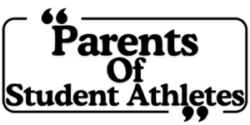Written by Pat Brown, MBA
As Name, Image, and Likeness (NIL) deals continue to expand in the world of college sports, student-athletes are presented with exciting opportunities to monetize their personal brand. However, with these opportunities comes the challenge of protecting the intellectual property (IP) rights associated with their name, image, and likeness. NIL deals can involve using an athlete’s name, social media presence, or other likenesses in advertisements, sponsorships, and promotions. Properly protecting these rights is crucial to ensuring the athlete’s brand and financial future are safeguarded.
Here’s how to protect your athlete’s intellectual property rights in NIL deals:
1. Understand What Intellectual Property (IP) Covers
The first step in protecting your athlete’s IP is understanding what it includes. Intellectual property generally refers to creations of the mind that are used in commerce, such as:
- Name: The athlete’s personal name can be trademarked if it’s used as a brand.
- Image: Any likeness or photo of the athlete that is used for promotional or advertising purposes.
- Likeness: This can include a signature look, physical gestures, or even the athlete’s voice or mannerisms.
- Social Media Presence: The athlete’s social media accounts and content can also be part of their intellectual property if used for commercial purposes.
It’s important to distinguish what is truly owned by the athlete and what may be part of a deal or agreement with a brand. This will help determine how the athlete’s name, image, and likeness are protected.
2. Trademark the Athlete’s Name or Brand
One of the most effective ways to protect an athlete’s intellectual property is through trademarking. A trademark gives the athlete exclusive rights to use their name, logo, or any other brand elements in commerce. This prevents others from using the same or similar marks without permission.
Why Trademarking Matters:
- Exclusive Rights: Trademarking provides the athlete with the exclusive right to use their name, image, or likeness for marketing, products, and promotional purposes.
- Legal Protection: A trademark provides legal grounds to protect against infringement, and the athlete can take legal action if someone uses their name or likeness without permission.
- Brand Control: Owning the trademark allows the athlete to control how their brand is used in the market.
Parents should consult with a trademark attorney to determine if trademarking is right for their child and how to begin the process. It’s a proactive step to ensuring that the athlete’s personal brand remains protected.
3. Negotiate Clear IP Terms in NIL Contracts
When entering into NIL agreements with brands or companies, it’s essential to include clear terms related to intellectual property usage in the contract. Many NIL contracts involve the use of an athlete’s name, image, and likeness, so it’s critical to define exactly how and when these rights can be used.
Key things to look for in the IP section of the contract include:
- Scope of Usage: Define how the athlete’s name, image, or likeness can be used. Is it limited to specific types of media (e.g., social media, commercials, print ads), or does the brand have broader usage rights? Ensure that usage is limited to specific channels and time frames.
- Duration: Clarify how long the brand can use the athlete’s IP. Does the right to use the athlete’s image or name last for the duration of the contract, or will it extend beyond that?
- Exclusivity: Specify whether the brand has exclusive rights to use the athlete’s IP in certain categories (e.g., can the athlete still endorse competing brands in the same category during the contract period?).
- Compensation for IP Usage: Ensure that compensation is outlined for the use of the athlete’s intellectual property. If the athlete’s name, image, or likeness will be used across multiple platforms, make sure that fair compensation is included for each use.
Negotiating clear terms will protect the athlete’s brand and prevent unauthorized or unwanted usage of their name and likeness.
4. Maintain Control of Social Media Accounts
Social media is one of the most valuable aspects of an athlete’s personal brand. As part of NIL deals, brands may want to use the athlete’s social media presence for promotions or endorsements. However, maintaining control over social media accounts is essential for protecting the athlete’s personal brand.
Steps to Ensure Social Media Protection:
- Ownership: Ensure that the athlete retains ownership of their social media accounts, even if the account is part of a sponsored deal. The athlete should never transfer ownership of their accounts to the brand.
- Brand Guidelines: Include specific brand guidelines for how the athlete’s social media content can be used. This should cover what types of posts the athlete can make and what types of content the brand can post on their behalf.
- Authenticity: Encourage the athlete to maintain authenticity when posting on social media, as this will help strengthen their personal brand. They should always ensure that content aligns with their values and image, even if it is part of a promotional deal.
By controlling their social media presence, the athlete retains ownership of their IP and ensures that their personal brand remains intact.
5. Understand the Limits of Work for Hire
Some NIL contracts may include “work-for-hire” provisions. In a work-for-hire agreement, the athlete may be asked to create content (e.g., videos, photos, graphics) or perform other services as part of the sponsorship. Typically, the rights to the content created under a work-for-hire clause belong to the company, not the athlete.
How to Protect Against Work-for-Hire Issues:
- Limitations on Content Ownership: Ensure that any content created for the sponsor, such as photos, videos, or written posts, is clearly defined in terms of ownership. Ideally, the athlete should retain ownership of content, with the brand being granted a license to use it for a specified period.
- Negotiating Retention of Rights: If the athlete does agree to create content as part of the deal, negotiate for the right to use the content for their own purposes (e.g., for personal social media, future promotions, or portfolio use).
Clarifying the ownership of any content created ensures that the athlete maintains control over their intellectual property and can use the material beyond the immediate scope of the NIL deal.
6. Work with a Specialized IP Attorney
An intellectual property attorney who specializes in NIL deals can be an invaluable resource in protecting the athlete’s rights. A knowledgeable attorney can review contracts, negotiate IP terms, and ensure that the athlete’s personal brand and assets are fully protected.
Key benefits of working with an IP attorney include:
- Legal Expertise: An attorney can navigate the complexities of intellectual property law and ensure that the athlete’s rights are properly enforced.
- Contract Review: They can review any NIL contracts to ensure that the IP provisions are in the athlete’s best interest and that they are not unknowingly signing away important rights.
- IP Strategy: They can help develop an overall strategy for protecting and monetizing the athlete’s intellectual property long-term.
Having legal counsel on hand is crucial to ensuring that the athlete’s IP is both protected and properly utilized.
7. Monitor and Enforce IP Rights
Once the athlete’s intellectual property is protected, it’s important to regularly monitor its usage and take action if their IP rights are violated. This may include:
- Monitoring unauthorized use: Keep an eye out for any unauthorized use of the athlete’s name, image, or likeness. This may involve regular online searches or hiring a service to track infringements.
- Taking legal action: If the athlete’s IP is used without permission, legal action may be necessary to enforce their rights. This can involve sending cease-and-desist letters, negotiating settlements, or pursuing a lawsuit if needed.
By actively monitoring and enforcing their intellectual property rights, the athlete can maintain control over their personal brand and prevent exploitation.
Final Thoughts
Protecting your athlete’s intellectual property rights is crucial in today’s NIL-driven landscape. As NIL deals continue to grow, ensuring that the athlete retains ownership and control over their name, image, and likeness is vital for their long-term success and financial security. By understanding the complexities of IP law, negotiating clear terms in contracts, and working with legal professionals, you can help safeguard your child’s personal brand and maximize the benefits of their NIL opportunities.
- Pat Brown, MBA




